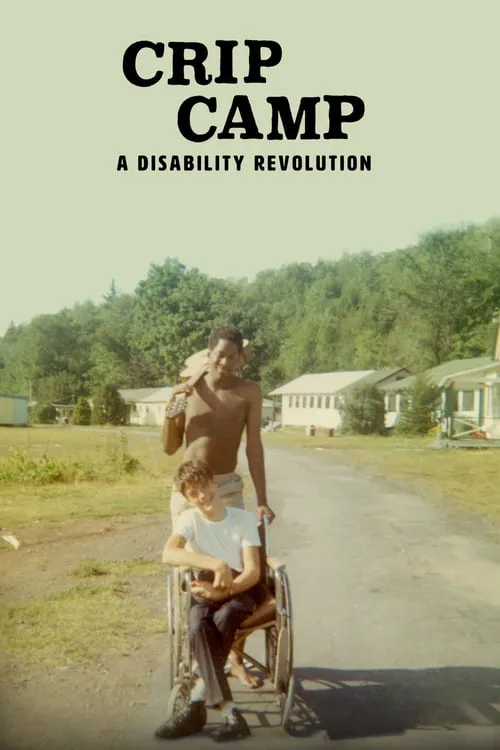Crip Camp: A Disability Revolution

Plot
In the early 1970s, a group of young people with physical disabilities gathered at a rundown summer camp in the Catskill Mountains, not far from the Woodstock music festival. This was not just another summer camp experience but a life-changing event that would set in motion a revolution that would reshape the lives of millions of people with disabilities. The summer camp, known as Camp Jened, was initially established to provide a brief respite for teenagers with mobility impairments, but it soon evolved into a vibrant community that encouraged socializing, friendship, and self-discovery. Camp Jened was founded in the 1950s, and for several decades, it catered to the needs of young people with disabilities, mainly those with physical impairments such as polio and spinal cord injuries. In the early 1970s, the camp was home to a diverse group of teenagers, each with unique stories, motivations, and goals. Among them was Judith Heumann, a feisty and determined young woman born with polio, who would prove to be a central figure in the disability rights movement. The camp was not just a place for recreation but also a space for socialization, where campers could interact, learn from one another, and form deep friendships. For many campers, Camp Jened was a sanctuary, a place where they could temporarily escape the limitations and stereotypes imposed by society. The camp's atmosphere was relaxed, and its counselors were not only supportive but also advocates for the campers' rights. Under their guidance, the teenagers at Camp Jened developed a sense of self-worth and belonging, which was crucial to their growth and development. However, the campers' lives outside Camp Jened were marked by institutionalization and segregation. People with disabilities were confined to institutions, forced to endure inhumane conditions and subjected to treatments and treatments that were more akin to torture than care. The campers knew they were not alone in their struggles, but they had yet to find their collective voice and organize a movement to demand change. As the summer of 1970 approached, a group of ambitious and driven campers, led by Judith Heumann, began to envision a different future. They were tired of being confined to their wheelchairs and strollers, tired of being treated as inferior, and tired of being excluded from mainstream society. This sense of discontent and frustration sparked a desire to resist and to fight for their rights. They started to discuss, debate, and strategize, searching for ways to challenge the oppressive systems that had held them back for so long. The campers realized that the key to creating change lay in self-advocacy and organizing. They needed to mobilize, to spread their message, and to convince the public that they deserved dignity, respect, and equality. This epiphany sparked a wave of activism that reverberated throughout the country. Campers began attending protests and rallies, often using unconventional means to draw attention to their cause. One memorable moment was when a group of campers staged a protest at the United Nations, where they demanded that the organization recognize the rights of people with disabilities. The impact of the campers' activism was immediate and significant. They inspired others to join the movement, including able-bodied allies who recognized the injustice and inequality faced by people with disabilities. As the momentum grew, the campers' cause gained traction, and attention began to focus on their fight for rights and inclusion. The disability rights movement, as it came to be known, was fueled by Camp Jened and its campers. In the early 1970s, the movement gained pace with a wave of protests, sit-ins, and occupations of institutions throughout the United States. These direct actions pushed for greater accessibility, inclusion, and rights for people with disabilities, and ultimately led to the passage of pivotal legislation, such as Section 504 of the Rehabilitation Act and the Americans with Disabilities Act (ADA). Section 504, signed into law in 1973, was a groundbreaking piece of legislation that prohibited discrimination against people with disabilities in federally funded programs and institutions. This law marked a significant turning point in the disability rights movement, as it explicitly recognized that people with disabilities had the right to equal access to education, employment, and healthcare. The ADA, passed in 1990, built upon this momentum, outlawing discrimination against people with disabilities in all areas of public life, including employment, transportation, and public spaces. The disability rights movement, sparked by the campers of Camp Jened, has had far-reaching consequences. It has led to greater accessibility, inclusive education, and employment opportunities for people with disabilities, as well as a shift in societal attitudes towards recognizing and valuing diversity. Camp Jened, a small summer camp in the Catskill Mountains, played a pivotal role in shaping this revolution, providing a platform for young people with disabilities to grow, to mobilize, and to demand change. The legacy of Camp Jened continues to inspire a new generation of activists, advocates, and individuals with disabilities. Their story serves as a testament to the power of collective action, self-advocacy, and the boundless potential of human resilience and determination. As we look to the future, the impact of their revolution will continue to reshape our world, ensuring that people with disabilities are recognized as valuable members of society, deserving of respect, dignity, and equal opportunities.
Reviews
Recommendations




